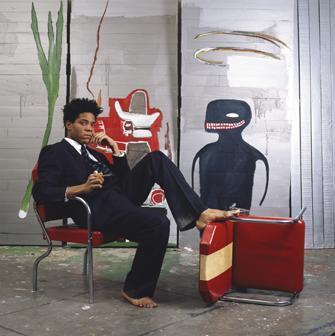Jean-Michel Basquiat Gallery |
| Jean-Michel Basquiat (1960–1988) was born and raised in Brooklyn, the son of a Haitian-American father and a Puerto Rican–American mother. At an early age, he showed a precocious talent for drawing, and his mother enrolled him as a Junior Member of the Brooklyn Museum when he was six. Basquiat first gained notoriety as a teenage graffiti poet and musician. By 1981, at the age of twenty, he had turned from spraying graffiti on the walls of buildings in Lower Manhattan to selling paintings in SoHo galleries, rapidly becoming one of the most accomplished artists of his generation. Astute collectors began buying his art, and his gallery shows sold out. Critics noted the originality of his work, its emotional depth, unique iconography, and formal strengths in color, composition, and drawing. By 1985, he was featured on the cover of The New York Times Magazine as the epitome of the hot, young artist in a booming market. Tragically, Basquiat began using heroin and died of a drug overdose when he was just twenty-seven years old. |
|
|
Biography
Bulletin Board
Renowned Art
(home) |
Jean-Michel Basquiat (1960-1988)
Jean-Michel Basquiat started as a street artist painting graffiti art (using the pseudonym Samo) and then he became a very popular and successful avant-garde artist.
His style was avant garde - nervous, fierce and energetic.
Basquiat used painterly gestures on canvas, most often depicting skeletal figures and mask-like faces that signal his obsession with mortality, and imagery derived from his street existence, such as automobiles, buildings, police, children's sidewalk games and graffiti. He played himself in New York Beat Movie, Downtown 81, and Eat to the Beat.
Basquiat became addicted to heroin, and died of an overdose.
|
female artists: by birth year | alphabetically
all artists, with thumbnails: by birth year | alphabetically
all artists: by birth year | alphabetically
artists born in the 13th 14th 15th 16th 17th 18th 19th 20th century |
